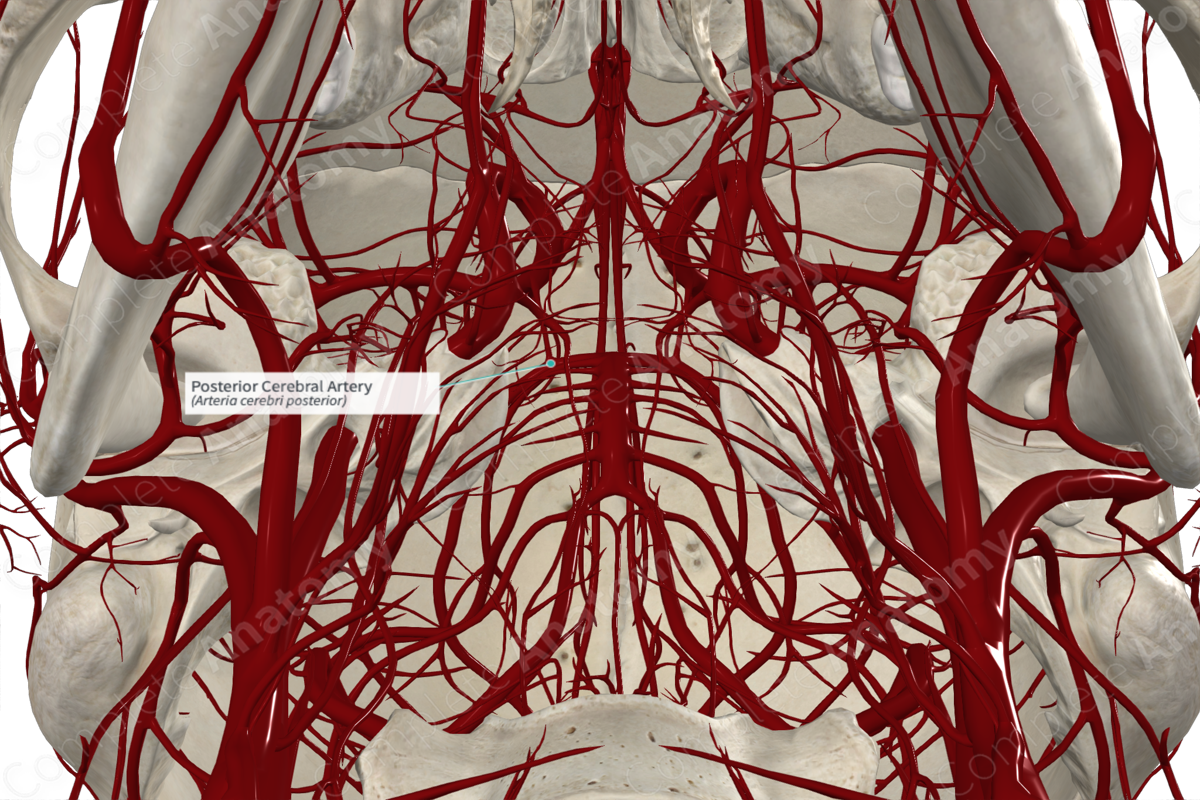
Quick Facts
The right posterior cerebral artery is one of the two terminal branches of the basilar artery, the other being the left posterior cerebral artery.
From its origin, it travels posterolaterally around the superior part of the pons, in a manner that is parallel to, but superior to, the superior cerebellar artery. It then travels along the inferomedial surface of the posterior part of the cerebral hemisphere. It ends by dividing into two terminal branches; these are the medial and lateral occipital arteries.
For descriptive purposes, the posterior cerebral artery is described as having a precommunicating part and a postcommunicating part. The precommunicating part is the portion of the artery that lies proximal to the posterior communicating artery, while the postcommunicating part is the portion of the artery that lies distal to it.
Along it path, the precommunicating part of the posterior cerebral artery gives off arteries that travel to the pons, midbrain, thalamus, and pineal body; while the postcommunicating part gives off arteries that travel to the midbrain, thalamus, and choroid plexuses of the 3rd and 4th ventricles.
Learn more about this topic from other Elsevier products
Posterior Cerebral Artery

The posterior cerebral arteries are the terminal branches of the basilar artery.



